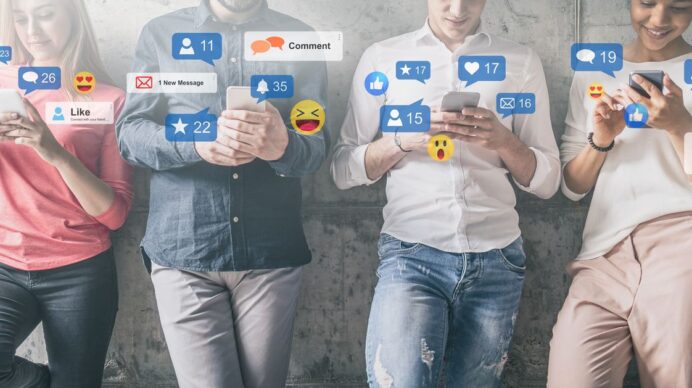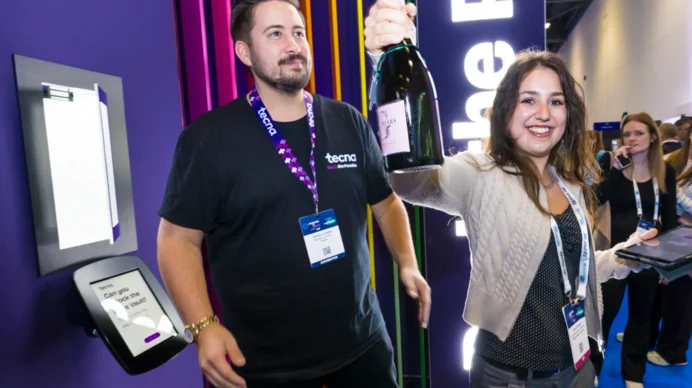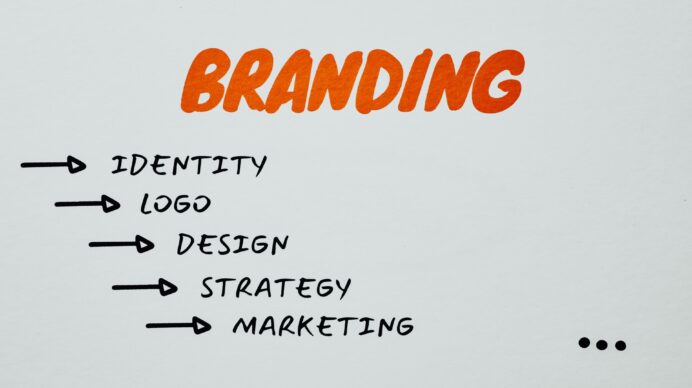Phygital Technologies are shaping the world of retail in ever more immersive ways. Not too long ago, omnichannel marketing was heralded across the board as being the best marketing model for retailers. But the tides have changed. Retailers have moved beyond the integrated, omnichannel approach.
Instead, retailers are pushing for strategies that blur the lines and keep the shoppers engaged for longer or driving to purchase faster. What is phygital? A term that describes the bridge between the narrowing gap between the physical world and the digital world, and really – the physical, digital and mobile experience.
Phygital retail: a shopping ecosystem
Indeed, away from traditional models that silo the physical and digital into distinct channels for shoppers, a phygital retail strategy creates a shopping journey in which physical experiences and digital technologies interact with each other and compliment one another as a complete shopping ecosystem.
Suffice it to say, phygital means enhancing physical channels by integrating digital technology and information.
Whilst digital channels are now striving to reproduce the human, personalised experience normally only afforded by in-store shopping.

A focus on pro-phygital retail displays
As retailers mould their strategies around creating a phygital market space, their retail displays are inevitably following suit and specifications for in-store displays are evolving.
Retailers are seeking out displays can accommodate the new integration of the digital into the physical.
For instance, display stands for virtual changing rooms are becoming more common. Particularly in forward-thinking, future-ready retail stores.
Likewise, retailers may soon start installing phygital retail displays that provide curated user reviews on products. The benefit? Quick and accessible reviews could assist undecided consumers in making difficult buying decisions in store.
We are constantly sifting through reviews online. Why not do the same in stores? After all, user generated content is increasingly valued by consumers as a reputable source of product evaluation.
Some of the key phygital technologies you may recognise
Phygital shopping benefits both consumers and retailers. For the former, it fosters an entirely frictionless, seamless shopping experience. One in which physical shopping starts to match the expediency of online shopping. And online, where the human touch of physical is being simulated.
For the latter, it presents an opportunity to harvest a substantial amount of otherwise untapped consumer data.
So, it’s no wonder we’re seeing lots of new phygital technologies making their way into the marketing space.
Here are some phygital technologies you might recognise:
1. Cashier-less shopping
The rise of cashier-less shopping is imminent. Retailers are pushing to transform their in-store shopping models.
That is to say, they’re moving away from human assistance and towards a personalised, digitised physical shopping experience.
Many retailers already have phygital retail displays in their stores as click-and-collect points.
Interestingly, some retailers have started using phygital displays in clothing stores to increase shopper convenience. As such, only a select few clothing items are displayed on the in-store racks, whilst the rest of the stock is browsed on an onscreen catalogue.
Soon, we’ll be seeing retailers take their phygital retail displays a step further with artificially-intelligent shop assistants and we are already seeing examples of this with robot style greeters.
2. Augmented and virtual reality
We’ve all seen just how popular augmented reality (AR) can be. Have you heard of Pokémon Go? The AR game that had millions of consumers wandering the streets. Phone in hand, searching for nearby Pokémon. That’s AR at its finest.
What the case of Pokémon Go perfectly demonstrates, is that AR’s potential for engagement is staggering.
From gaming to shopping, retailers are leveraging the popularity of AR to enhance the consumer experience and drive sales. A prime example is fashion retailer Lacoste, who introduced an app that used AR to allow mobile users to try on virtual shoes.
With retailers diving into the world of AR, it is an exciting time for retail displays.
Away from traditional designs, display providers will be able to evolve the way they create their displays and push their offering in a new direction. Indeed, it presents a perfect opportunity to delve into something ultra-contemporary and creatively challenging.
3. Locations-based push notifications
Locations-based push notifications are a way of sending target notifications to consumers based on their geographical location. Location-based push notifications work by interacting with Bluetooth beacons installed in stores and various other locations, which track the whereabouts of mobile users and send notifications for stores nearby.
An example: if a consumer walked past a coffee shop, a bluetooth beacon would recognise that they were close by. It would then, say, send out a signal prompting a notification for a 5% off coffee voucher. Or, perhaps, notify them of a new coffee product the shops has launched that might interest them. Beacon technology is also used in a number of other useful ways by retailers.
For starters, retailers can track geographical data to find out how long shoppers are spending in store. What’s more, retailers can use it to identify which sections within the store are experiencing the strongest traction. In sending out push-notifications, retailers can also remind mobile users of the presence of their app. If, indeed, they have one. This is proven to be an effective way to drive app engagements.
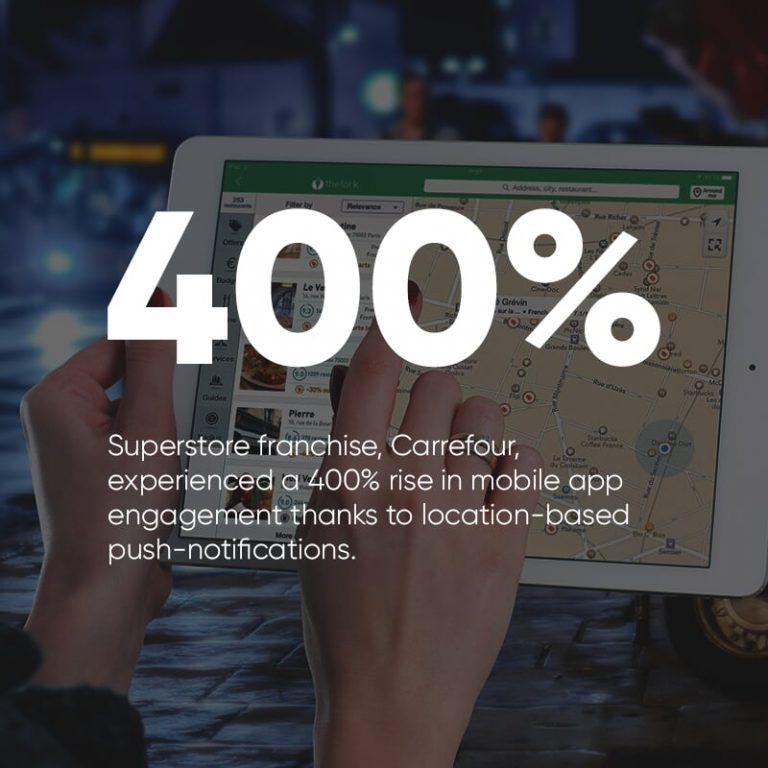
4. Live chats
The advent of the live chat is a classic example of the push for phygital. And it’s skyrocketing in popularity.
In fact, live customer chats are poised to grow by 87% in the next year or so. And with good reason: eMarketer found that 63% of web users were more likely to return to a website with a live chat option over one that did not.
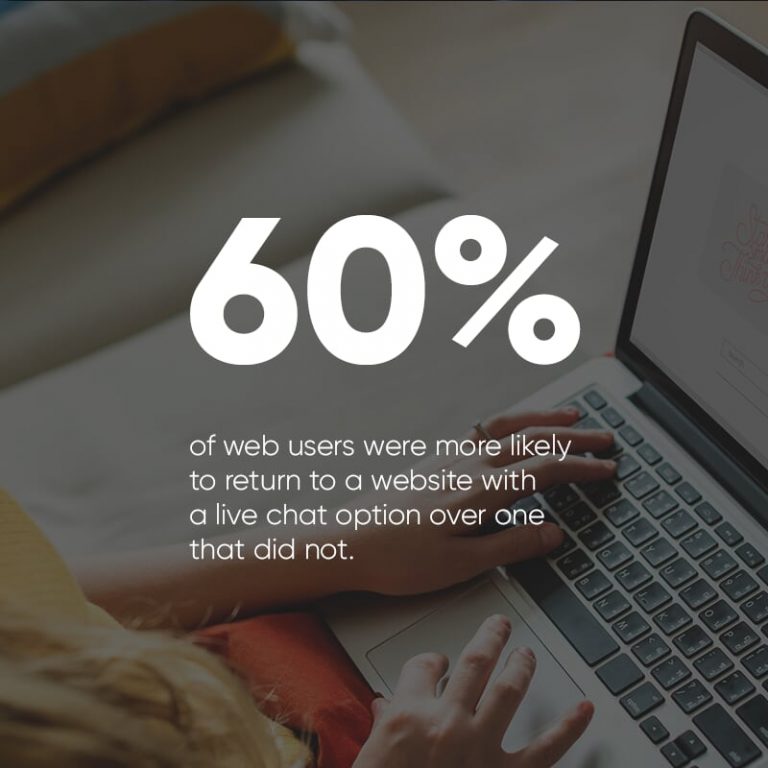
5. Personalised content & ads
Personalisation on digital platforms is a key way in which retailers enhance the user experience.
Have you ever noticed that Amazon suggests and recommends products to you based on what you may have looked at an earlier time? That’s no coincidence.
Using machine learning, Amazon tracks user data and then uses it to inform and personalise adverts and content based on unique preferences. For consumers, the result is a more enjoyable shopping experience unmarred by the bombardment of unpersonalised ads. For businesses, it means a boost in profits. 55% of Amazon’s sales are reportedly driven by their personalised recommendations – pretty impressive stuff.
In summary
Retailers are undoubtedly evolving their marketing strategies, blending physical and digital marketing together to create a holistic marketing space. And there’s no signs it will be slowing down.
Digitisation will continue to pervade the lives of consumers. And to engage with a demographic that wants digital technologies with them at all times, phygital is the way retailers will have to continue to go. So, make sure you are future-ready. Think about displays that accommodate the phygital from brief so that they are incorporated seamlessly within the final design.
If you’re thinking about future-ready phygital displays, contact the Tecna team for more information on how we can help you maximise your retail display.

